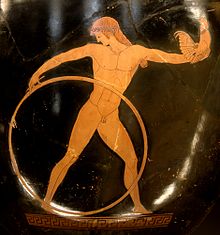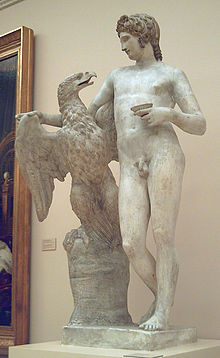Dimensions
height 20 cm
width 23 cm
depth 3 cm
Lost amulet of Amenhotep III ? :)
"Amenhotep III (Hellenized as Amenophis III; Egyptian Amāna-Ḥātpa; meaning Amun is Satisfied) also known as Amenhotep the Magnificent was the ninth pharaoh of the Eighteenth dynasty. According to different authors, he ruled Egypt from June 1386 to 1349 BC or June 1388 BC to December 1351 BC/1350 BC[4] after his father Thutmose IV died. Amenhotep III was the son of Thutmose by a minor wife Mutemwiya.[5]
His reign was a period of unprecedented prosperity and artistic splendour, when Egypt reached the peak of her artistic and international power. When he died (probably in the 39th year of his reign), his son initially ruled as Amenhotep IV, but later changed his own royal name to Akhenaten."
"His enormous mortuary temple on the west bank of the Nile was, in its day, the largest religious complex inThebes, but unfortunately, the king chose to build it too close to the floodplain and less than two hundred years later, it stood in ruins. Much of the masonry was purloined by Merneptah and later pharaohs for their own construction projects.[45] The Colossi of Memnon—two massive stone statues, eighteen meters high, of Amenhotep that stood at the gateway of his mortuary temple—are the only elements of the complex that remained standing. Amenhotep III also built the Third Pylon at Karnak and erected 600 statues of the goddess Sekhmet in the Temple of Mut, south of Karnak.[46] Some of the most magnificent statues of New Kingdom Egypt date to his reign "such as the two outstanding couchant rose granite lions originally set before the temple at Soleb in Nubia" as well as a large series of royal sculptures.[47] Several beautiful black granite seated statues of Amenhotep wearing the nemes headress have come from excavations behind the Colossi of Memnon as well as from Tanis in the Delta.[47]
One of the most stunning finds of royal statues dating to his reign was made as recently as 1989 in the courtyard of Amenhotep III's colonnade of the Temple of Luxor where acache of statues was found, including a 6 feet (1.8 m)-high pink quartzite statue of the king wearing the Double Crown found in near-perfect condition.[47] It was mounted on a sled, and may have been a cult statue.[47] The only damage it had sustained was that the name of the god Amun had been hacked out wherever it appeared in the pharaoh's cartouche, clearly done as part of the systematic effort to eliminate any mention of this god during the reign of his successor, Akhenaton.[47]"

Amenhotep III, Musée du Louvre

Colossal statue of Amenhotep III

Queen Tiye, whose husband, Amenhotep III, may have been depicted to her right in this broken statue

Faience decoration with Amenhotep III's prenomen from his Theban palace, Metropolitan Museum of Art.
.JPG)
.JPG)

.JPG)












